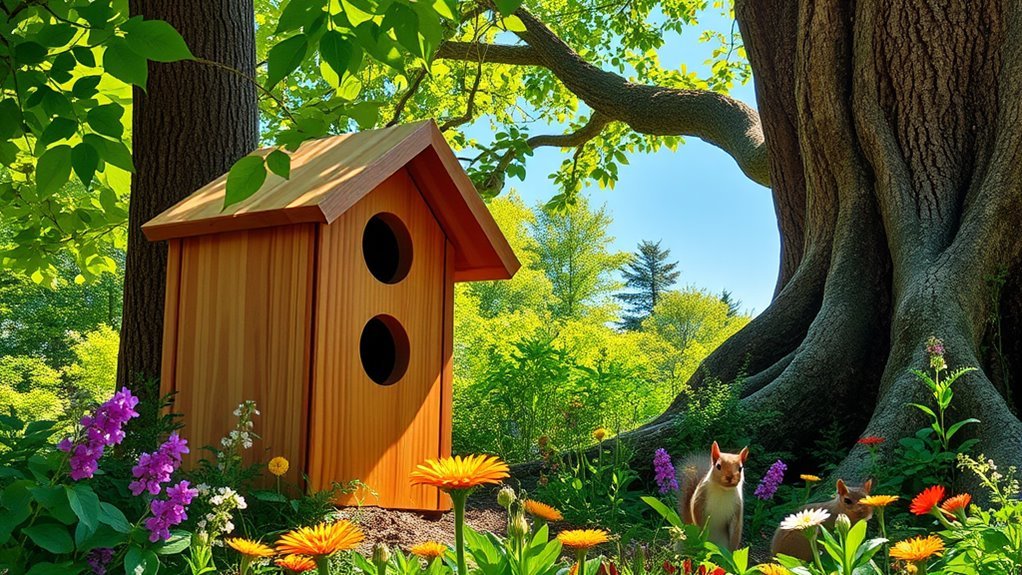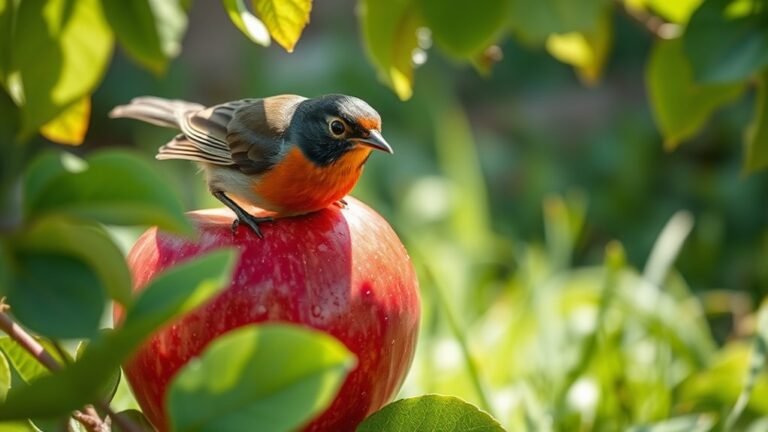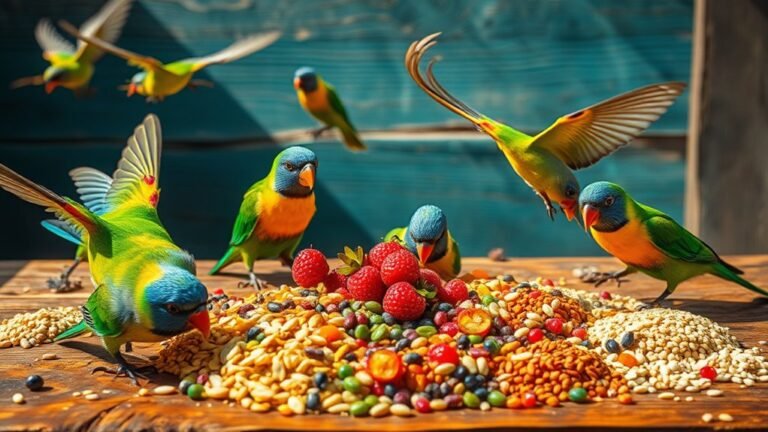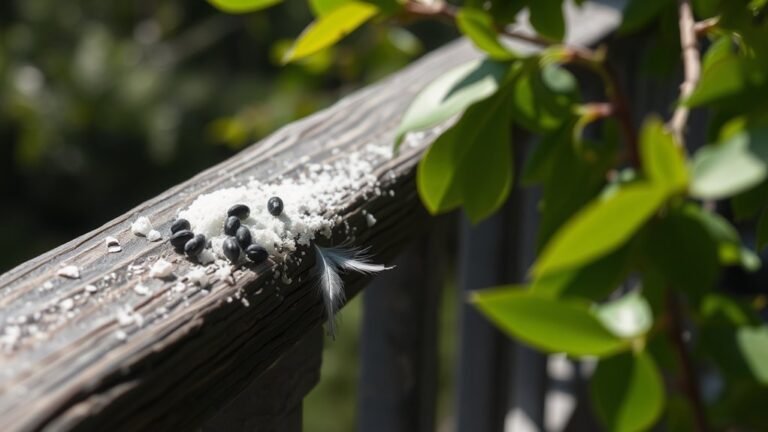Why Aren’t Birds Using My Newly Installed Nest Box?
If birds are not using your new nest box, several reasons could explain this. First, check the location of the box. It should be placed in a quiet area with some shelter. The design of the nest box is also important. Ensure it matches the needs of the birds you want to attract.
Next, consider the availability of food nearby. Birds need access to food sources like seeds, berries, or insects. If the area lacks these, they may choose not to visit your nest box.
Also, think about competition. If there are many other nesting options nearby, birds might prefer those over yours. Safety is another factor; birds seek safe spots away from predators.
To improve your chances of attracting birds, assess these elements. What will you do next to make your nest box more appealing?
Key Takeaways
Here are some reasons why birds may not be using your newly installed nest box:
- Height: Make sure the nest box is installed between 5 to 10 feet off the ground. This height is ideal for attracting birds.
- Design: Check if the box is made from untreated wood and is the right size for the bird species you want to attract. The design matters.
- Food Sources: Birds need food nearby. Plant a variety of flowers and shrubs or put up feeders filled with seeds to attract them.
- Timing: Install the nest box at the right time of year. If you do it too early or too late in the season, birds may not use it.
- Safety: Birds prefer safe places to nest. Place the box away from dense bushes and at least five feet off the ground to protect against predators.
By addressing these factors, you can increase the chances of birds using your nest box. Enjoy watching your feathered friends!
Incorrect Nest Box Location
When you place a nest box in the wrong location, you reduce its chances of attracting birds. Nest box height is crucial. If you position it too low or too high, birds may avoid it. Aim to place your box between 5 to 10 feet off the ground, depending on the bird species you want to attract.
Surrounding vegetation is also important. Dense plants provide shelter from predators and bad weather, making birds more likely to use your box.
On the other hand, an open area can make birds feel exposed, causing them to stay away. By considering these factors, you can create a safe and inviting environment for birds to nest.
Unsuitable Nest Box Design
Many people think that any box will work for nesting birds, but a bad nest box design can keep them away. The materials you use are important. Untreated wood is often better than plastic because it allows air to flow.
The size of the box matters too. If it's too big or too small, birds mightn't want to use it. Make sure the entrance hole is the right size for the birds you want to attract. If the hole is too big, predators can get in. If it's too small, birds won't fit.
Keep the design simple. Avoid complex shapes that can trap heat or moisture.
Lack of Food Sources Nearby
If food sources are scarce nearby, even a well-made nest box may remain empty. Birds naturally prefer areas with plenty of food, as it's crucial for their survival and breeding.
To attract birds to your yard, assess the variety of plants and food available. A mix of native plants, seeds, and insects can draw different bird species. If your yard lacks diversity, birds may seek nesting spots elsewhere.
You can increase your chances of attracting birds by adding various plants and keeping feeders stocked. Creating a lively ecosystem makes your yard more inviting for birds, encouraging them to use your nest box and feel at home in your space.
Seasonal Timing and Migration Patterns
Birds are influenced by seasonal timing and migration patterns. They migrate based on daylight length and temperature changes.
If you install a nest box at the wrong time, birds may not use it. For instance, if you set up the box too early in spring, birds may not arrive until later, leaving it empty. If you wait too long, they may have already found other nesting spots.
Knowing local migration patterns and seasonal changes can help you attract birds to your yard. This understanding allows you to create a welcoming space that fits their natural habits.
Competition From Other Birds
When you set up a nest box, consider the competition from other birds. Different bird species have unique nesting habits. Some are territorial and may chase away other birds, which can limit occupancy in your nest box.
Aggressive species, like house sparrows, may take over the area, leaving little chance for other birds.
To increase your chances of attracting birds, observe the types of birds in your area. You may want to move the nest box to a different location or add more boxes to provide options for multiple birds.
This can create a welcoming environment for various species.
Predators and Safety Concerns
Attracting birds to your nest box can be rewarding, but it's important to keep these birds safe from predators. Cats, raccoons, and snakes can threaten nesting birds. To help protect them, you can take some simple steps.
First, place the nest box at least five feet off the ground. This height can help keep climbing predators away.
Second, use baffles around the box to block access from above.
Third, choose a location that's away from thick bushes or dense vegetation, as this can provide cover for predators.
By making these adjustments, you can create a safer environment for birds. This not only protects them but also encourages more birds to use your nest box.
When birds feel secure, they're more likely to make your backyard their home. Enjoy the beauty and sounds of feathered visitors in your space!
Need for Patience and Observation
Attracting birds to your nest box requires patience and careful observation.
It's important to understand that results may not come quickly. Take the time to watch the area around your box. Observe the types of birds that visit your yard and their behaviors. This information can help you figure out what might attract them.
Keep your nest box clean and in good condition. Regular maintenance encourages birds to nest.
Also, pay attention to bird activity throughout the seasons. Different bird species have different nesting times.
Frequently Asked Questions
What Materials Should I Use for Cleaning the Nest Box?
To clean a nest box effectively, use mild soap and warm water. A soft brush will help remove dirt. Avoid harsh chemicals, as they can be harmful to birds. Regular cleaning keeps the nest box safe and inviting, encouraging birds to return.
How Often Should I Check the Nest Box for Activity?
Check the nest box at least once a week. This schedule helps you see how active the box is and whether local birds show interest or start nesting. Regular checks allow you to respond quickly to any signs of activity.
Can I Attract Specific Bird Species to My Nest Box?
To attract specific bird species, focus on their nesting box preferences. Learn about the requirements for each species, such as the size of the entrance hole and the materials used. Adjust your nest box based on this information. This approach increases the chances of attracting the birds you want. Enjoy watching your chosen species thrive in their new home!
Should I Place Nesting Materials Inside the Box?
Placing bird nesting materials inside your nest box can help attract birds. This action encourages birds to explore and use the box for nesting. Ensure your nest box is in a calm and sheltered location. This setting increases the chances of attracting birds to your garden.
What Time of Day Is Best for Observing Birds Near the Box?
To observe birds near your box, focus on the morning. Birds are most active during this time as they prepare for the day. You may also see some activity in the evening, but mornings usually provide the best opportunities to spot different birds. Enjoy the experience of watching these lively creatures start their day!

Ava is a bird enthusiast and nature lover who has spent countless hours observing and learning about the fascinating world of birds. With a passion for sharing her knowledge and inspiring others to appreciate the beauty of birds, Ava writes about her experiences and insights on avianadmirer.com.







